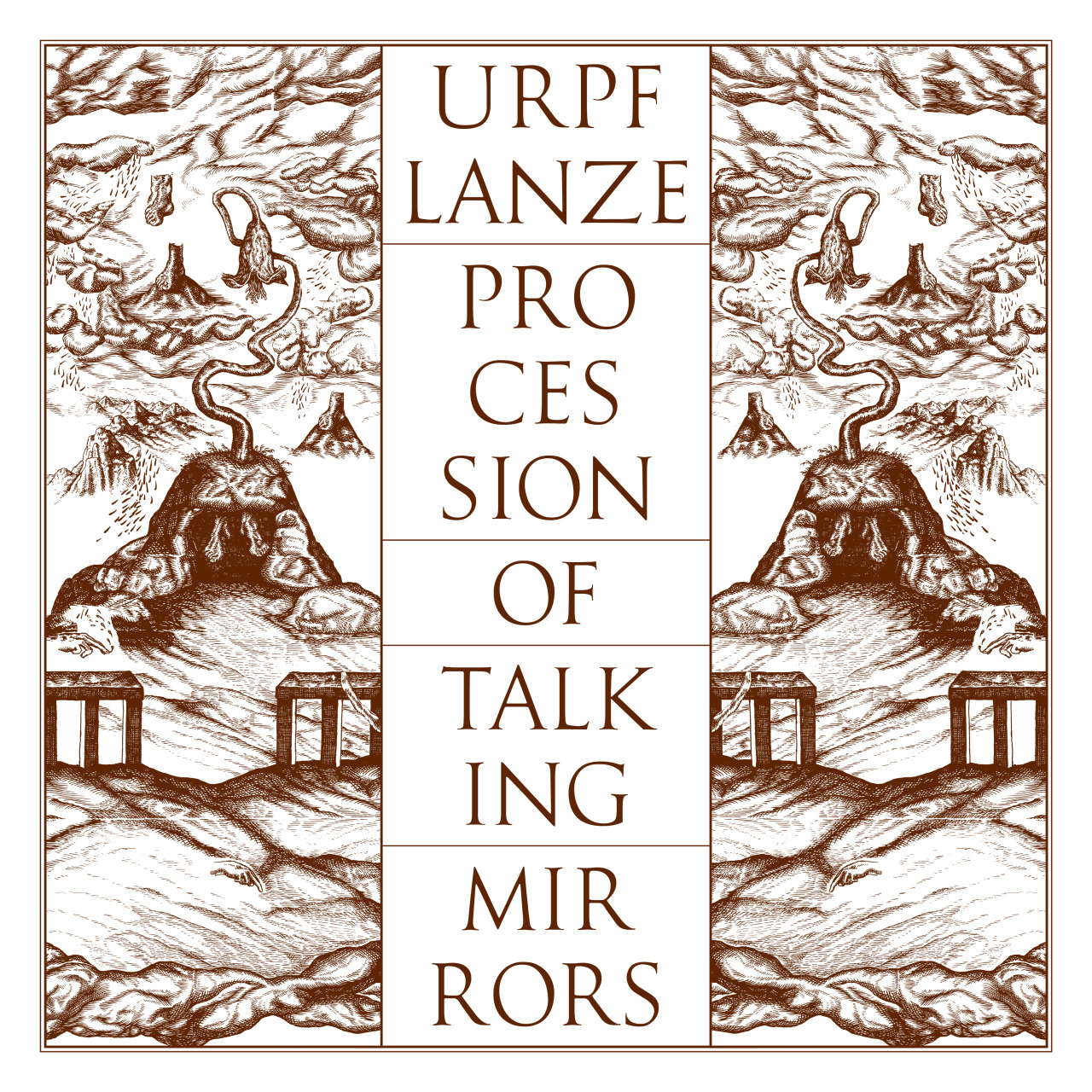
Sviranje gitare prije izuma perspektive.
woutervanhaelemeesch.tumblr.com/
soundcloud.com/experimedia/urpf-lanze-procession-of
Urpf Lanze is the moniker of his rather unorthodox solo guitar project, under which he has been playing for several years now. With an acoustic guitar that lays flat on his lap, tuned to unwieldy scales, he brutalises the instrument in an oddly musical way. As if this wasn't enough he lays down some vocal work that goes from ventriloquist-like whines and mumbles to deep and guttural grunts.
The result is a rather unhinged and demented music. Imagine the rawness of Bill Orcutt, the more frightening sides of Loren Mazzacane Connors and the absurd stylings of Wilburn Burchette all wrapped into a Lovecraftian sonic nightmare. 'Procession of Talking Mirrors' is his first full lenght solo album. Recorded live on a 4-track tape recorder, these 6 tracks offer a mixture of Japanese folk music, free psych, scratchy delta-blues recordings, damaged lo-fi and aggressively percussive fingerpicking. While some tracks may carry a more melancholy tone, others seem closer to acoustic death metal than any kind of folk music.
Some technical information can be found here
www.audiomer.org/
www.youtube.com/watch?v=l91tqKQuU2o
Like the young knight Perceval, who sits speechless and confused in the presence of the Procession of the Grail, Urpf Lanze (real name: Wouter Vanhaelemeesch) stands guitar-in-hand, frog-in-throat, before The Procession of Talking Mirrors. The mirrors reflect a gruesome scene of guitars being torn to shreds by tornado-like fingers; a rumbling superstorm of breath growls and screeches out the echoing chambers of the beast’s vast throat and mouth.
The The Procession of Talking Mirrors LP (which has beautifully appropriate cover artwork made by the musician) will be released by Belgian label audioMER on March 10. For now, the label has posted the riotous finale of the record, “The Lost Wooden Planet Script.” Tiny Mix Tapes, March 2013
This is Urpf Lanze aka Belgian visual artist Wouter Vanhaelemeesch's first solo acoustic guitar album. His music has been described as outsider or anti-folk, but here he rides roughshod over such considerations. Some of the pieces approach the ecstatic, naggingly insistent style displayed by James Blackshaw and the late Jack Rose on Raag Manifestos. But if Vanhaelemeesch lacks the refinement of those two players, he makes up for it with aggression. With his acoustic guitar flat on his lap, he subjects it to some rough vocalisations. On "Plague Pillow", where he obsessively works on a picking pattern around three chords, they seem almost absent-minded murmurs. Elsewhere, as on the title track, his grunts, throaty growls and baleful ululations can be distracting, almost comedic. But this track also exemplifies his singular approach to the guitar. Veering from insistent percussive batterings to bending slackened strings to finely articulated runs, he employs disciplined technique and the power of sloppiness in a way that few other guitarists would even consider trying. By Mike Barnes, WIRE
While he is recognised as one of history’s great Romantic poets, it is less well known that in the later stages of his life Johann Wolfgang von Goethe turned his attention to the natural sciences, becoming a prominent figure in the group of pre-Darwinians now known as the Rational Morphologists. Under the assumption that the species they observed were frozen, unchanging in time, these thinkers searched for the underlying laws of form that governed their development. In a slim but influential volume, The Metamorphosis of Plants, Goethe argued that all features of plants, stamen, sepals, petals, etc., were essentially variants of a fundamental form, the leaf, raising this structure in his mind to the basic descriptor of all plant life, one which would open a window on the essence of this biological kingdom, the archetypal plant: the urpflanze.
On the face of it, what we have here is a solo guitar album. Wouter Vanhaelemeesch plays with the guitar flat on his lap, often dwelling on a single chord for a whole track, using repetition, tempo, and a style of fingerpicking that distributes and moves accent across notes in a downright psychedelic sort of way. It is percussive and metallic at its most aggressive, bewilderingly hypnotic during quieter moments. Add to this a growling, grunting, wailing vocal presence that never leans towards anything like lyricism or even the control of metal vocals, just an accompanying series of mammalian outbursts requiring neither rhyme nor reason. The result has the exhilarating feeling of a technically talented artist casting the rules down a deep and mosscovered well, at once musically potent and deliciously unhinged, far more grubby than its genre classification might suggest.
At around 40 minutes this is a relatively short album, but in no way does it seem like a job half done. Its vision is chaotic, weird, perhaps uninterpretable, but in the end it comes across with extreme clarity. Paying lip service to blues, folk, and American primitivism along the way, the theme that remains constant across the board is a counterpoise between the roughness of the voice with the violent rattling guitar, and the emergence of subtle melodic and rhythmic patterns among them, perpetually being swept away by altered copies of themselves. It’s a work that wears its vision and artistic allegiances on its sleeve, from the music itself to the subtext in the track titles to the cover art with its shades of Hieronymous Bosch. For anyone with an ear for acoustic guitar music which puts raw humanity ahead of clinical studio treatment, look no further than this.
Scrolldust, March 2013
KWADRATUUR
Interview with Urpf Lanze where he talks about his new record. You can read the interview HERE
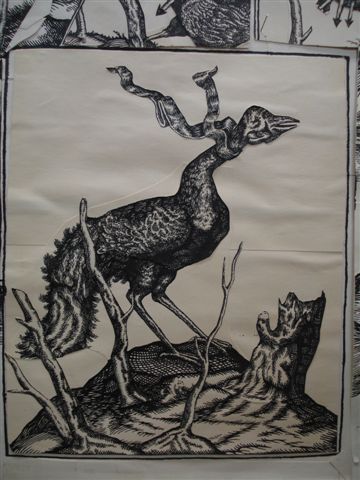
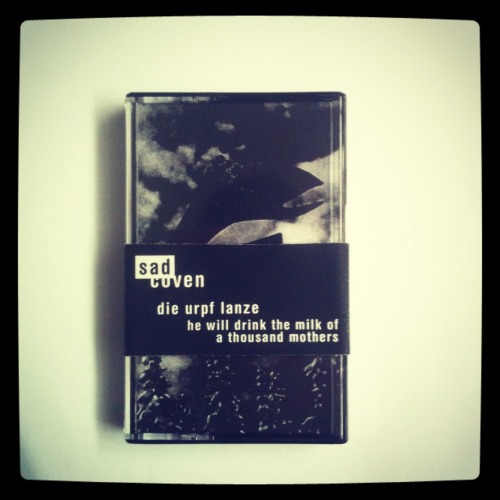
The Mr. Becos interview series continues with Wouter Vanhaelemeesch
AKA Urpf Lanze: a Belgian musician, visual artist, and CEO of the record
label audioMER. You can hear his music on the recent Incunabulum New Music for Old Instruments compilation or on the new Urpf Lanze LP coming in the new year. Some of his art can be seen at the bottom of this post.
Mr Becos: Your guitar playing is kind of feral and moody, but every once in a while some real technique floats to the surface. Where does that come from?
WV/UL: Technique is like a big giant bat that got stuck in your bedroom. As long as you don't try too hard to catch it, it probably won't hurt you. Starting to play the guitar on the lap completely changed how I played. For example, I can fret with my thumb or hit the low E rhythmically while playing a chord. Also, I need to invent all new chords; I can use my pinky to get way up there and at the same time slide my thumb way down and stuff like that. I try to pick up on what sounds weird or wrong and then get into that. It's not a question I get too much though, the only time somebody bothered to ask me anything about 'technique' was when a German guy rather angrily asked me 'do you even know how to play the guitar?' after a show. I do remember that I played a 12 minute riff singing 'I hate your town' over it a few moments earlier.
Mr Becos: You've been described as "little gollum singing the blues". Do you identify more with Lord of the Rings Gollum or Jewish folklore Golem?
WV/UL: Since both of these characters don't wear pants, it's impossible for me to choose between them.
Also, I do NOT sing the blues. Even though I'm hugely influenced by Charley Patton, Peg Leg Howell, Robert Wilkins, John Lee Hooker, Big Joe Williams, Frank Stokes, Blind Willie Johnson, Robert Pete Williams and Method Man, I do not, nor will I ever sing the blues. I despise people who take certain chords and play them in a certain progression, I feel that it's wrong. Just because it ain't broke, that don't mean it's fixed. That being said, for me blues is about depression, hatred, contempt, homicidal rage and hormonal conflict. Which happen to be my subjects also.
Mr Becos: You say you don't play the blues, but you keep your guitar in your lap just like Jeff Healy, the blind white popular blues player. Are you going to tell me he's not an influence?
Also, I do NOT sing the blues. Even though I'm hugely influenced by Charley Patton, Peg Leg Howell, Robert Wilkins, John Lee Hooker, Big Joe Williams, Frank Stokes, Blind Willie Johnson, Robert Pete Williams and Method Man, I do not, nor will I ever sing the blues. I despise people who take certain chords and play them in a certain progression, I feel that it's wrong. Just because it ain't broke, that don't mean it's fixed. That being said, for me blues is about depression, hatred, contempt, homicidal rage and hormonal conflict. Which happen to be my subjects also.
Mr Becos: You say you don't play the blues, but you keep your guitar in your lap just like Jeff Healy, the blind white popular blues player. Are you going to tell me he's not an influence?
WV/UL: I actually saw some footage of him on TV when I
was a kid. I wasn't playing music then but I do remember thinking 'why
doesn't it occur to other people to play a guitar like that? Seems to
work for that guy'. Later in life I saw pictures of Charley Patton
holding his guitar upside down, making a weird chord with his fingers
and it triggered something. At that point I was tired of doing what I
was doing. By downtuning that thing it and putting it down I tried to
get rid of all the musical baggage I had. It's all upsides; it forces
you to sit down, which is good for thinking and it makes for a nice
little table where beverages can be put on.
In the end the guitar is just a piano without legs. Now you could glue some legs on to it and then give it cute little socks and ballerina shoes but if you put it down it becomes something more sinister; like a legless, armless torso for me to play with. Now that I think of it, a guitar with legs, socks and ballerina shoes on is actually way more sinister.
Mr Becos: In addition to being a blues enthusiast golem you run a record label, audioMER, which seems somehow connected to an art publishing house, art research entity and an art book fair. Are you one tentacle of this beast or do all of the tentacles emanate from you?
In the end the guitar is just a piano without legs. Now you could glue some legs on to it and then give it cute little socks and ballerina shoes but if you put it down it becomes something more sinister; like a legless, armless torso for me to play with. Now that I think of it, a guitar with legs, socks and ballerina shoes on is actually way more sinister.
Mr Becos: In addition to being a blues enthusiast golem you run a record label, audioMER, which seems somehow connected to an art publishing house, art research entity and an art book fair. Are you one tentacle of this beast or do all of the tentacles emanate from you?
WV/UL: I'm not really connected to the other stuff, but Jeroen Wille with whom I run audioMER works for the publishing house as a graphic designer. We do work in a rather autonomous way, so I guess we're more of a stray tentacle.
I was also involved with a label called Smeraldina-Rima, that I founded with a friend called Levi Seeldraeyers. One of the last projects that I did with him was Robbie Basho's 'Twilight Peaks' album. I'm not really involved with the running side of things there, but I do contribute some artwork now and then.
Mr Becos: Wasn't that some kind of lost Basho relaxation recording?
WV/UL: Since a few years I've been really obsessed with Robbie Basho's music, and I tried to get my hands on pretty much everything he recorded. I downloaded some album called 'Twilight Peaks' on an obscure blog somewhere for which I could find no info whatsoever. I started emailing Glenn Jones, whom I knew from setting up some shows.
He told me Basho got asked to do an album by a company that owned a chain of new age shops that sold scented candles and other crap in the early eighties. By that time, Basho had fallen on hard times, not having a record deal and seeing his audience shrink and shrink. The new age company had started this label called 'The Art of Relaxation' under which they wanted to produce tapes with new age music to be sold exclusively in their shops.
So they asked Basho to do a collection of solo guitar compositions of a more soothing type. Basho didn't like the idea, wanting to record an orchestral composition he was working on at that time, but needed the money so went with it. Glenn was pretty close to him at that time and remembered that Basho was sort of reluctantly getting started on a solo guitar album, but got into it more and more and eventually recorded something that was pretty fantastic and up to par with his best work from the sixties and seventies. The label slapped a bunch of shitty reverb
on it and started selling the tapes through the shop but went out of business (quelle surprise) soon after that. Pretty soon after that Basho died in a freak accident. The place that held the master tapes had thrown them out.
Luckily, Robbie had sent some demos (no reverb) to Glenn for him to check out, and Glenn still holds those. So he suggested me putting it out on the Smeraldina-Rima label.
Mr. Becos: Your label AudioMER has also put out some releases by Jozef Van Wissem, probably the world's only avant-garde lute player. Where did you find this guy?
WV/UL: I met Jozef at the Kraak festival in 2007. I thought it was awesome, a guy playing a Renaissance lute over field recordings, going from really minimal tunes to classical pieces played backwards. We talked a bit after that and I put out the first Brethren of the Free Spirit album on audioMER a few months later. We became quite good friends over the years, I did a bunch of drawings for his label Incunabulum. For his solo stuff and collabs he did with Smegma, United Bible Studies and recently his new record with Jim Jarmusch. Jozef is actually the one who sort of dragged me on stage to do Urpf Lanze live, asking me to be part of the 'New Music For Old Instruments' festival he curates. So all complaints should be directed to him.
Mr Becos: Belgium has some really active and interesting musical ferment. For the ignorant, what are some current Belgian labels (RIP Conspiracy) and/or musicians worth investigating?
WV/UL: That's gonna be a long answer, there are a ton of great artists round here. From the top of my head and apologies to all I forgot; Ignatz, Hellvete, Floris van Hoof, DSR Lines, Eric Thielemans, Je Suis le Petit Chevalier, Bear Bones Lay Low...
Labels you ask. Well Kraak is a good one, I like Morctapes, I always dig what Ultra Eczema digs up, Sub Rosa does some really great stuff like a book of outsider artist Adolf Wölfli with music by Baudoin de Jaer. That's really one of my favorite releases of this year. The singer from Alkerdeel also has a CD-r label called Luchtrat which translates as 'air-rat' (that's how we call pigeons here). There's a new tape label called Smeltkop that's doing some cool stuff. Also Beytal Tapes. Shelter Press did a really good Rene Hell / Pete Swanson split LP, they also do books.
Mr Becos: I don't know much about politics or economics, but last time I was in Belgium I heard a heated, drunken argument in which a non-Belgian yelled "your country is based on exploiting others’ resources! When the diamonds run out nothing will be left but a puddle of beer and chocolate!" Are you worried about becoming a refugee when this happens?
WV/UL: Beer and chocolate will get you through times of no diamonds, better then diamonds will get you through times of no beer and chocolate.


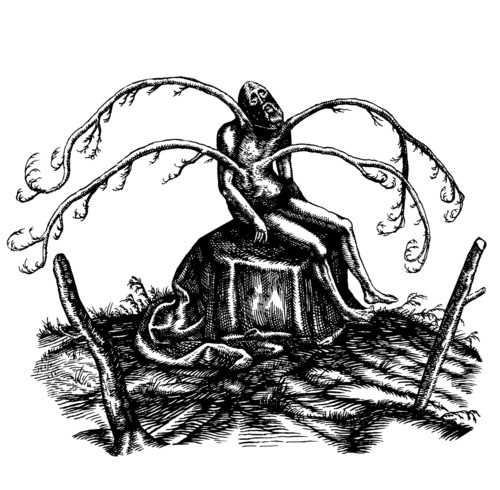
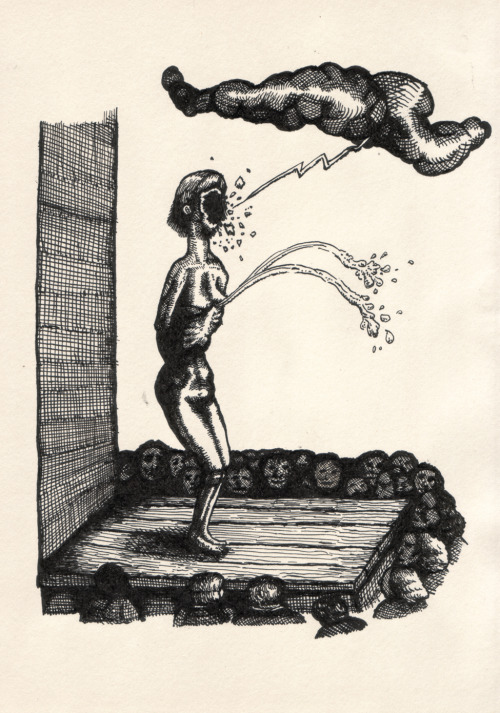

Nema komentara:
Objavi komentar